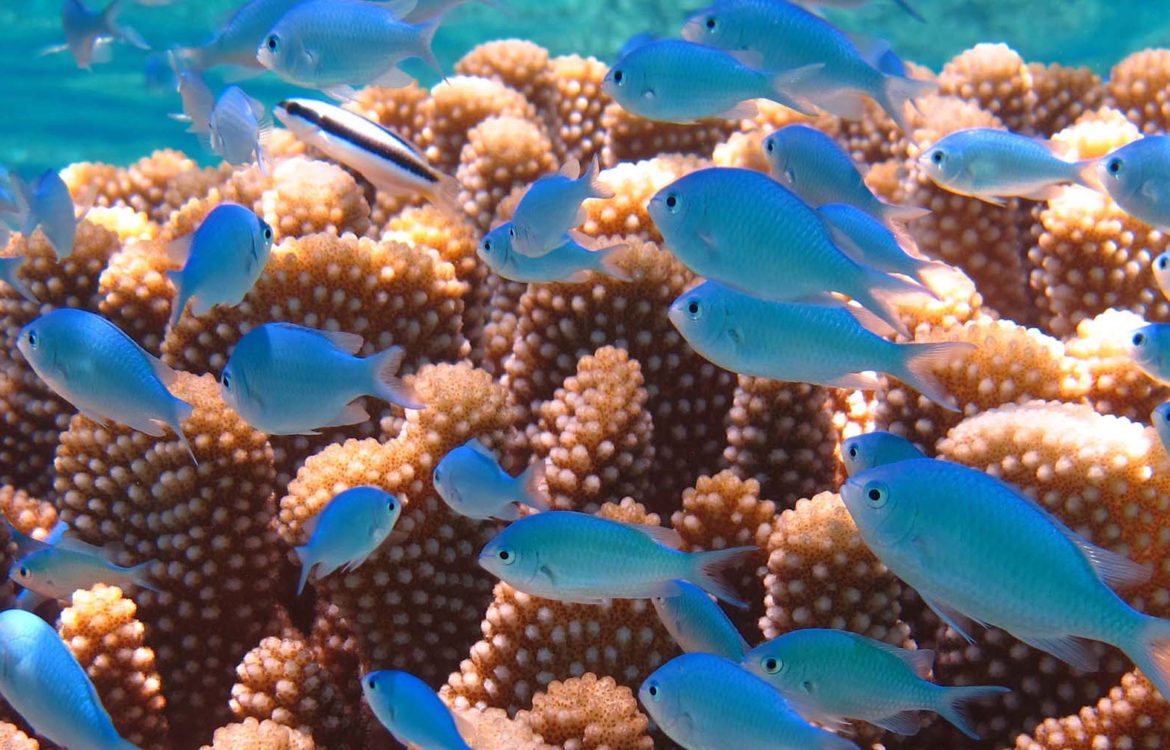In May, the state of Hawaii passed a bill banning the sale of over-the-counter sunscreen that contain chemicals that are allegedly destructive to Hawaii’s coral reefs and even to other forms of ocean life. The law takes effect on January 1, 2021 which is a lifetime in the personal care contract manufacturing industry. Any product containing oxybenzone or octinoxate will be banned. Over-the-counter versions of Coppertone, Banana Boat, and the ironically named, Hawaiian Tropic, will all be prohibited along with more than 3,500 brands in total with their current formulation.
Sounds like sunscreen manufacturer Armageddon, but is it the end of the world as we know it?
Did you know coral reefs are a colony of individual animals called polyps? Polyps are similar to sea anemones, a sea animal featured in Finding Nemo, and are part of a symbiotic eco-system and are valuable both for their photosynthesis and their beauty. Those supporting the Hawaiian regulation contend the science shows chemicals in the sunscreens are contributing to the destruction of the reefs.
Whatever your opinion of the science behind the prohibition and the effect of these chemicals on coral reefs and ocean wildlife, changes in regulations can pose a real threat to contract manufacturers and their clients.
For instance, a glance at sunscreens shows they typically have more than ten ingredients, sometimes a lot more. As in our upcoming article about parabens, ingredients are vilified without an understanding of their scientific purpose or efficacy. Legislation and regulation are not scientific processes, and shouldn’t be misinterpreted as being scientific or even fact-based. Legislation and regulation happen because a person or group has convinced a sufficient person or number of people in the appropriateness of their view or cause. In the case of sunscreen, it is one of the reasons of damage, not the cause.
From the respected Earth Institute at Columbia University:
“Coral reefs, the “rainforests of the sea,” are some of the most biodiverse and productive ecosystems on earth. They occupy less than one percent of the ocean floor, yet are home to more than a quarter of all marine species: crustaceans, reptiles, seaweeds, bacteria, fungi, and over 4000 species of fish make their home in coral reefs. With a global economic value of $375 billion a year, coral reefs provide food and resources for more than 500 million people in over 100 countries and territories. But tragically, coral reefs are in crisis.
Coral reefs are endangered by a variety of factors, including: natural phenomena such as hurricanes, El Niño, and diseases; local threats such as overfishing, destructive fishing techniques, coastal development, pollution, and careless tourism; and the global effects of climate change—warming seas and increasing levels of CO2 in the water. According to Reefs at Risk Revisited, a report by the World Resources Institute, 75 percent of the world’s coral reefs are at risk from local and global stresses. About a quarter of them are damaged beyond repair. If we continue with business as usual, 90 percent of coral reefs will be in danger by 2030, and nearly all of them by 2050.”
Searching “what is endangering coral reefs” results in everything from global warming to careless snorkelers. The pollution from shipping and fertilizer runoff are significant concerns, and yet, personal care products have been more easily targeted than shipping fuel leaks or plastic litter. Some experts argue that banning these chemicals will make consumers more vulnerable to skin cancer.
Our point is not to criticize the new regulation. After all, there are sunscreen products on the market that don’t contain that oxybenzone or octinoxate.
As a personal care product company, the key takeaway from the new Hawaiian ban is, use the best, least harmful chemicals you can and to always be testing new formulae. Try to anticipate your customer’s needs, including what they care about, even if that seemingly has nothing to do with personal care products.
It doesn’t mean the end of the world when a new regulation gets passed; it’s just time to adapt. Consider AquaNet… It’s made a comeback and without CFCs… which proves that anything is possible if you anticipate and adapt your product formula. For more, read our post on Trends in Contract Manufacturing as well.


